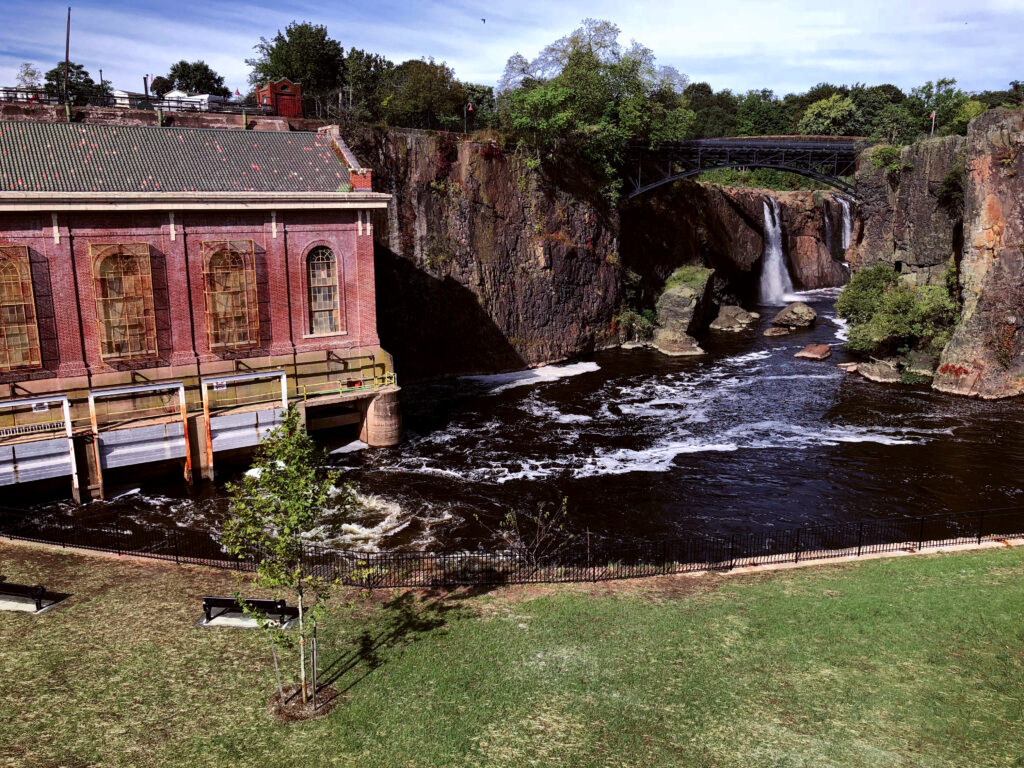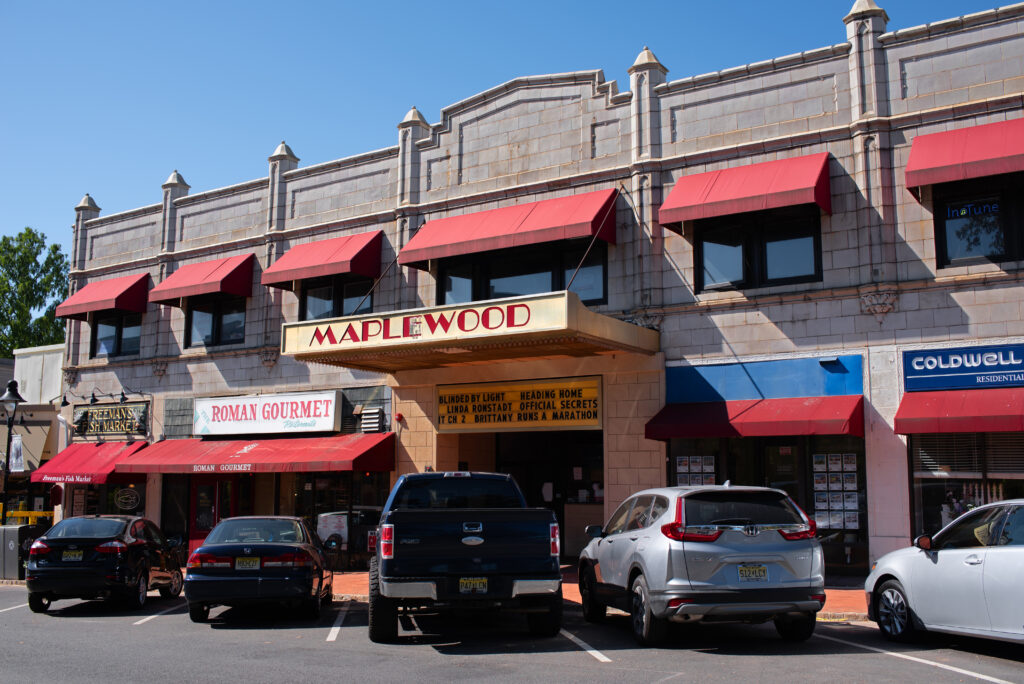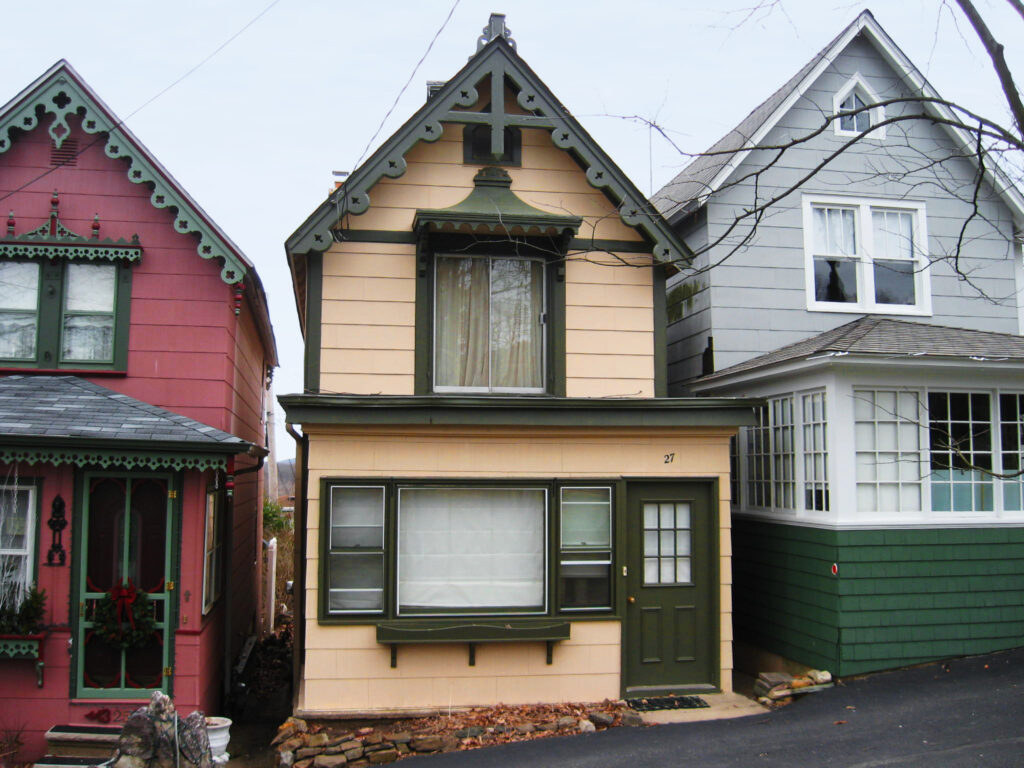Heritage tourism
What is heritage tourism?
Heritage tourism is a major motivation for many preservation efforts. The ACHP defines it as follows:
- Heritage Tourism
- Traveling to experience the places and activities that authentically represent the stories and people of the past for educational and entertainment purposes.
New Jersey has a rich heritage spanning the entire history of the United States and its people. Visitors from around the nation and world want to learn about this heritage. By visiting our cultural resources, they bolster our economy. If we learn their motivations and impacts, we can harness their interest to further historic preservation.
Introducing the cultural heritage traveler
National trends
According to 2009 and 2013 studies by Mandala Research, 71% (approximately 170.4 million) of the U.S. adult population are leisure travelers. Of these,
- 78% of all United States adults who travel for leisure are cultural heritage travelers.
- 87% of these adults prefer to take trips with a variety of activities, as opposed to a singular focus.
- 81% like to bring back local regional memorabilia to share with friends and family.
- 72% seek experiences where
the destination, buildings and surroundings have retained their historic character.
- 52% spend more money on cultural and/or heritage activities and 49% donate or volunteer.
- 24 million leisure travelers seek active, well-rounded travel experiences. Among these,
- 73% spend more money on cultural and/or heritage activities.
- 71% give back through donations or volunteering.
- 69% would pay more for lodging that reflects the cultural and/or heritage of their destination.
Collectively, these travelers contributed $171 billion to the national economy.
Heritage tourism’s impact on New Jersey
The New Jersey Historic Trust studies heritage tourism within the state. This extends to commissioning economic impact studies. According to the 2019 Economic Impacts of Heritage Tourism in New Jersey (republished 2022),
- Over 7% of the total Gross Domestic Product (GDP) of New Jersey comes from heritage tourism.
- New Jersey communities welcomed a total of 9.9 million visitors.
- 4.4 million of these were not local to the visited community.
- 5.4 million were local. Residents want to visit their local historic sites, too.
- 9% of overnight leisure visitors included heritage sites in their trips.
- Visitors spent $65.8 million on site and $3.5 billion off-site.
- This spending generated $485.2 million in federal taxes and $357.5 million in state and local taxes.
- In descending order, the most commonly supported off-site industries included:
- Finance, insurance and real estate ($561.3 million)
- Food and beverage ($525 million)
- Lodging ($371.8 million)
- Retail trade ($348.9 million)
- Recreation and entertainment ($239 million)
- Heritage tourism supported 49,600 New Jersey jobs and provided over $1.8 billion in income.
How can heritage tourism benefit my community?
Heritage tourism benefits directly from historic preservation. In turn, it provides a motive for maintaining and improving the community’s quality of life.
Aesthetics and healthy growth
The community benefits from balancing preservation with healthy growth. Let’s face it, not all change is good. By preserving historic properties and neighborhoods, communities maintain their overall aesthetic appeal.
This sustainable growth is achievable through municipal planning. Communities can strengthen local laws to guide zoning and development, preserving their character.
Commemorative
Sites can mark both good and bad moments in our nation’s history. The community is richer for having the tangible presence of past eras and historic styles. Younger generations can see and appreciate that history happened right here. This sense of place makes a stronger personal impact than text in a history textbook alone.
While our office does not issue plaques, it does recognize historic sites. We manage listings on the New Jersey and National Registers. These formally recognize a site’s significance and provide legal protections.
Social bonding
The community benefits when citizens take pride in its history. Mutual concern about local historic fabric motivates its protection.
Additionally, a well-preserved neighborhood provides a backdrop for other community events. They bring residents through historic neighborhoods but are not limited to historical themes. Some popular examples include:
- Seasonal festivals
- Townwide yard sales
- Food and/or drink tastings
- Car shows
- Nationally recognized events, like National Night Out
Education
Historic properties continually inspire us to interpret and reinterpret the past. They invite discussion of virtually every aspect of human life — economics, social relations, familial structure, politics, and more. Each generation will learn different lessons according to their needs. Sometimes, we discover a property we thought we already understood has a facet we missed.
- Many travelers look to broaden their horizons by seeing historic sites in person. Visitors from other towns and states want to learn more about American history. International travelers want to learn more about their host country.
- Local children benefit from having these sites open. Schools can organize trips to bring students to these sites. Combined with a well-designed interpretive program, this gives them a more engaging experience than sitting in a classroom.
- Local adults can benefit as well. They may have lived in the area for decades or even grown up here, but there are many stories in our collective history that they have not heard. Many marginalized people did not have a voice when these adults learned about local and regional history in school. Visiting these sites gives them new insight into the place they call home.
Economic growth
Historic preservation provides multi-pronged economic benefits. Rehabilitation costs less than demolition and generates more local jobs and economic activity. Designated districts stabilize or enhance private property values. On top of this, heritage tourism is one of the fastest growing niche market segments in the travel industry today.
In short, heritage tourism brings visitors into communities. They spend or donate money directly at the heritage sites themselves. Beyond that, though, the majority of their spending is in the surrounding area. They shop at local businesses and eat at local restaurants. If part of a larger trip, they may choose to stay at local motels and hotels.
Conversely, heritage tourism keeps local visitor spending within the community. Citizens gain reasons to explore their own community — and support local businesses — in their free time.
Education
Many travelers look to broaden their horizons by seeing historic sites in person. Visitors from other towns and states want to learn more about American history. International travelers want to learn more about their host country.
Locals benefit from having these sites open, too. Schools can organize trips to bring students to these sites. Combined with a well-designed interpretive program, this gives them a more engaging experience than sitting in a classroom.
Local adults can benefit as well. They may have lived in the area for decades or even grown up here, but there are many stories in our collective history that they have not heard. Visiting these sites gives them new insight into the place they call home.
Environmental
Preservation is not just for retaining open space and cultural landscapes. It also reduces the environmental cost of development. Two often-overlooked impacts of construction include:
- Buildings take energy to build. New concrete alone causes roughly 8% of all global carbon emissions from human activity.
- Construction and demolition produce waste that requires transportation, processing and/or disposal. Recycling materials keeps them out of landfills but still requires energy and practical use cases.
A well-preserved historic building already invested that initial construction energy. Maintaining that building does not produce as much waste as demolition. Historic preservation is compatible with sustainable architecture practices.
Resources
Are you a heritage tourist?
New Jersey State Park Service (DEP)
HPO does not manage state-owned historic sites but our parent department does. Find visitor information for state-owned sites on the New Jersey State Park Service website.
Journey Through Jersey
This website, affiliated with the New Jersey Historic Trust, is solely dedicated to heritage tourism in New Jersey.
History in New Jersey (VisitNJ)
The state’s official travel guide website has a section dedicated to historical attractions.
Heritage Travel (NPS)
Explore the National Park Service’s directory of national heritage sites.
Are you creating a program at a historic site?
The New Jersey Historic Trust’s Themes
Our partners at the New Jersey Historic Trust developed the following themes for sites and programs in New Jersey. While they overlap with our own statewide contexts, these are tailored to heritage tourism interests and needs.
New Jersey in Conflict
New Jersey’s pivotal role in the Revolutionary War began a military tradition that continues today.
New Jersey at Work
Industry and creative innovation shaped New Jersey and helped transform the world.
New Jersey Land and Sea
Making a living from the land and from the sea has long been part of life in the Garden State.
New Jersey at Play
New Jersey has a history of hosting vacationers seeking relaxation and inspiration.
Many Faces of New Jersey
New Jersey’s population has grown increasingly diverse from the first Native Americans to waves of immigrants from Europe and subsequently from all over the world.
New Jersey by Design
New Jersey has a remarkable assembly of great design that is reflected in designed landscapes and planned communities, as well as in vernacular and high-style buildings of many architectural types.
Other resources
New Jersey Heritage Tourism Master Plan (DCA)
Learn more about the New Jersey Historic Trust’s tourism themes, case studies and other guidance on the Department of Community Affairs website.
Heritage Tourism (Texas)
The Texas Historical Commission has a robust program with resources for both visitors and organizations looking to develop heritage sites.
Historical Markers in New Jersey (Department of State)
The New Jersey Historical Commission does not currently issue new markers. If your site already has a historical marker, however, you can check their listings for more information.
Grants for Historic Preservation
Browse available grant opportunities for your historic site.
America’s 250th anniversary
2026 marks the 250th anniversary, or Semiquincentennial, of the American Revolutionary War. New Jersey was home to key battles and other events in the war. Our Revolutionary heritage extends to a National Heritage Area and National Historic Trail. We expect an influx of tourists across our state’s Revolutionary-era sites and communities. To prepare, New Jersey established the RevolutionNJ program within the New Jersey Historical Commission. They will help historical sites and communities plan events, programs and site upgrades.
As part of these preparation efforts, our office is collaborating with:
- The New Jersey Historical Commission
- The New Jersey Historic Trust
- Other state offices
- Nonprofit organizations
Our past Revolutionary War survey initiatives contributed to the creation of both the Washington-Rochambeau Revolutionary Route and Crossroads of the American Revolution National Heritage Area.
RevolutionNJ
Do you have a Revolutionary War site? Or are you an educator preparing lessons on the Revolutionary War for your students? Learn how to prepare for the 250th anniversary of the American Revolution in New Jersey.
Crossroads of the American Revolution National Heritage Area
Explore Revolutionary War sites throughout New Jersey. Follow pivotal military campaigns or focus on regular people’s stories from the war.
Washington-Rochambeau Revolutionary Route in New Jersey Association (W3R-NJ)
This National Historic Trail follows French and Continental troops across the eastern seaboard. The New Jersey portion is also part of the Crossroads National Heritage Area.




